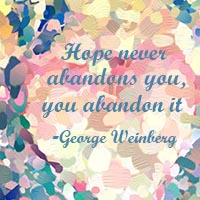The keynote speaker has won 51 Emmy Awards from the Northern California Chapter of the National Academy of Television Arts and Sciences. That was plenty of endorsement for me to see Wayne Freedman as he led the first half of a workshop I attended where six San Francisco television journalists shared their tips on telling news stories.
The official event title of the day-long was the “National Academy of Television and Academy Sciences (“NATAS”) Storytelling Workshop.” It was put together by video journalist and photographer Jeremy Carroll and held at the American Broadcasting Company-owned station, KGO-TV, in San Francisco.
The list of presenters included four video journalists:
-Wayne Freedman of KGO-TV
-Jeremy Carroll, photographer for NBC11
-Da Lin of KRON-TV
-Garvin Thomas of NBC Bay Area Proud
and television reporters:
-Julie Watts of KPIX (CBS)
-Noelle Walker of KTVU
Freedman’s book, It Takes More Than Good Looks To Succeed at Television News Reporting, is now in it’s second edition (2011), and required in many college journalism programs in the U.S., Canada and Europe. He shared some information on storytelling that’s worthy of sharing:
1) Feature writing techniques may work better for many television news stories than the traditional news story structure. Instead of putting the most important relevant facts first and the details later, tell the story with a beginning, middle, and end. And add an element of surprise or a big reveal.
Freedman gave several examples of how storytelling is strengthened by not going in chronological order of the actual event and moving elements around. For example, a story he did about a woman’s freeze-dried dog. The order of reveal is not chronological.
2) Storytelling is about structure and timelines. There’s not one timeline, there’s three:
a) the order of events;
b) the order which you shot those events; and
c) the order you put the timelines in the story.
Move the timelines around to add more interest, which changes the structure.
3) Set the Scene. This might be done with one line or ten lines. Don’t give away the story with the first line or begin with the punch line.
4) The viewer needs to have an emotional investment in the subject. Television is a visceral medium. “The road to the head goes through the gut,” said Freedman. Tell stories through people. Compelling stories are visceral stories. “Visceral” means appealing to our instincts more than our intellect.
If the viewer cares about the person they’ll care about the story. Find a person to tell a story. “Sometimes you can tell two or three stories through one person.”
Read more about this Wayne Freedman’s tips in my next post.
You might also like:
–7 Elements to Include in Digital Storytelling
–4 Simple Tools for Effective Storytelling
–Where Do Opals Come From?
